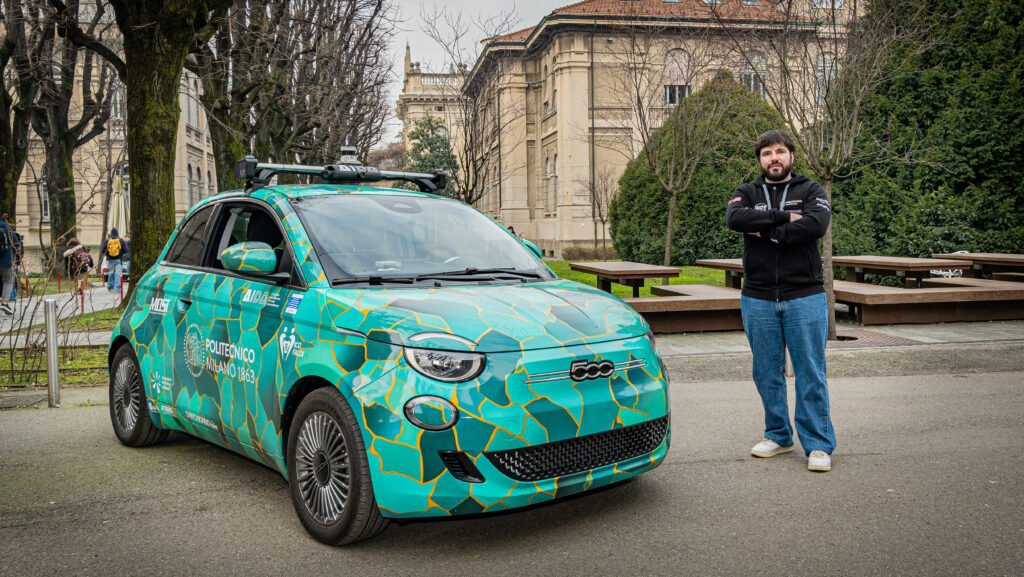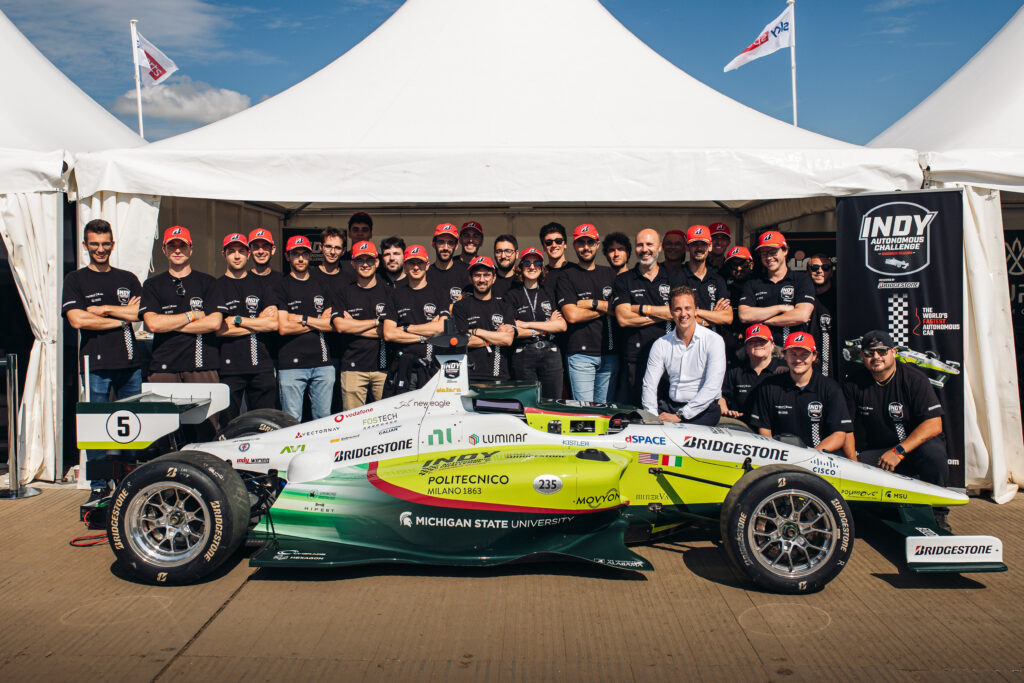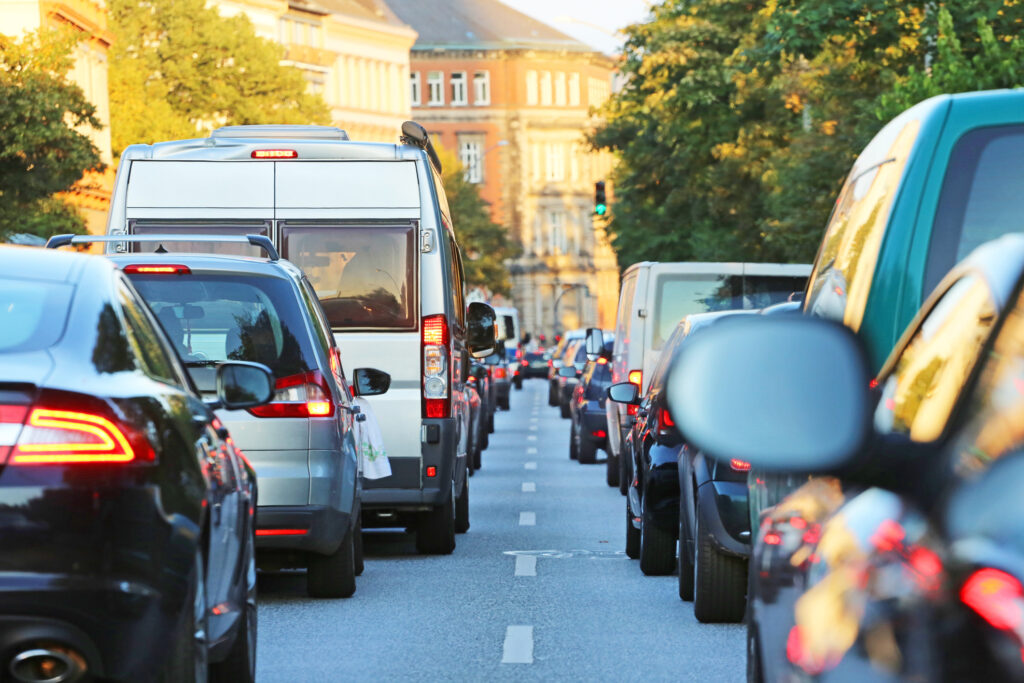Promoting sustainable mobility is one of the priorities set by policy makers ranging from municipal authorities to national and European institutions. A study by the Politecnico di Milano, published in the international journal Scientific Reports, focuses on this very matter and proposes an innovative system for estimating the emissions of vehicles. The study offers a practical solution based on driving behaviour, whereby the citizen is encouraged to play an active part in the process of reducing emissions.
The study An innovative virtual sensing system for the vehicle-centric evaluation of emissions in the sustainable mobility transition was conducted by Professors Silvia Strada and Sergio Savaresi of the Department of Electronics, Information and Bioengineering, and Antonio Pagliaroli, a PhD student in the same department.
We asked Antonio to tell us how the new emissions monitoring system could change the mobility model as we know it.

How did you come to follow this line of research?
It started with my thesis project which I carried out in collaboration with UnipolTech, a technology company of the Unipol Group. I had no idea at the time what would come of this research. The study, which I conducted with Professors Strada and Savaresi, was presented on various occasions to municipal authorities, including those of Rome and Milan, as well as to the Chamber of Deputies and during round tables at the European Commission.
After my Laurea (equivalent to Bachelor of Science) in Computer Engineering and my Laurea Magistrale (equivalent to Master of Science) in Computer Science and Engineering, I stayed on at the Politecnico as a research fellow, and I am now doing a PhD with mOve, a research group of the Department of Electronics, Information and Bioengineering.
What is mOve about?
mOve is a research group in the field of electronic control systems applied inside and between vehicles which do various things such as control the chassis and engine, optimise energy consumption, and coordinate and control fleets of vehicles. The group mainly focuses on road and off-road motor vehicles (cars, motorcycles, electric bicycles, agricultural tractors, trains, etc.), but also marine vehicles (surface ships and submarines). Due to the sheer variety of vehicles and applications, we all work hard together to share methods, ideas and technologies to help innovate the field of both conventional and autonomous mobility.

The study published in Scientific Reports proposes a new emissions monitoring system based on actual driver behaviour. Can you tell us how it works?
To make measurements, we used an existing Unipol instrument rather than any specially designed systems. UnipolTech simply installs a black box in insured cars for the purpose of monitoring the speed and position of the cars. The black box is equipped with a GPS and an IMU, an inertial sensor that calculates sudden accelerations and braking. Our study also took into account vehicle-related information generally collected at the time of insurance (Euro classification, vehicle type, make and model). This system therefore uses very simple instrumentation, doing away with the need to buy more expensive devices.
In particular, we measured the journeys made by more than 8,000 cars, calculating the average speed, duration and distance of journeys, and taking into account sudden acceleration and braking, and therefore the style of driving. After collating the vehicle data and the measurement of journeys, we developed consumption curves to show the emissions of carbon dioxide (CO₂) and nitrogen oxides (NOx).
The study revealed real implications for both institutions and individual citizens. How do the results of your research compare to the standards that are generally put in place to promote sustainable mobility?
This model enables citizens to know how much their vehicle impacts the environment and, consequently, how they can change their driving behaviour. The results of the study can also be of valuable use for policy makers in the field of sustainable mobility. Policies that are typically implemented by municipal authorities, for example, are based on the Euro classification; the suggested model proposes to extend the system of limitations for categories of vehicles, taking into account the individual monitoring of emissions and actual driving behaviour.
The results of the research could be of added help to those sections of the population who cannot afford to buy an electric or hybrid car. However, it remains true that the type of car has a significant impact on emissions and, therefore, the system of limitations linked to the Euro classification is still valid. We can say that our research expands the system based on limitations thanks to the inclusion of the component of individual behaviour.
Taking the example of Milan, which with areas B and C implements the usual paradigm of Euro classes, we note that there are movements also in another perspective. These include the Move-In (Monitoraggio dei VEicoli INquinanti) project which proposes a mileage threshold based on the Euro class of the vehicle and its fuel (diesel or gasoline).

With your personalised analysis of the environmental impact, you have identified a “green speed”, i.e. the speed that allows lower consumption and a reduction in emissions. What would you say it is?
The “green speed” is, in effect, the optimal speed for an engine. Aerodynamic drag increases at high speeds, forcing the engine to work harder and consume more energy. The study showed that an engine works best at a speed between 50 and 70 km/h. The “green speed” is the speed we normally drive at on rural roads, while driving behaviour in the urban environment is generally more “aggressive” on the pedals: continuous braking and acceleration, especially if abrupt, have a greater environmental impact.
Will you continue research along these lines in the future?
There is certainly a growing trend in emission studies, but I personally think it is important to focus more on mobility patterns. At the moment, in fact, I am doing research on how mobility affects not only the amount of emissions, but also the development of cities. In particular, I am focusing on the changes that new technologies, from electric to self-driving vehicles, will bring to the volume of emissions and the lifestyles of all of us. These new technologies could in the future radically change not only our use of vehicles in the city, but also the layout of the city, for example as public spaces increase.
My research is therefore evolving in a broader context: it started from the study of emissions and has branched out into mobility models. This line of research is giving me a lot of satisfaction; in fact, great interest has also been expressed by big players worldwide, especially regarding the impact of autonomous vehicles on mobility.
What do you like most about your research work?
My answer may sound simple but it comes from the heart: for me the most important thing is the real impact of what I do every day. I like the fact that my research is not “pure”, but applied and therefore can make a contribution to the creation of something tangible.
